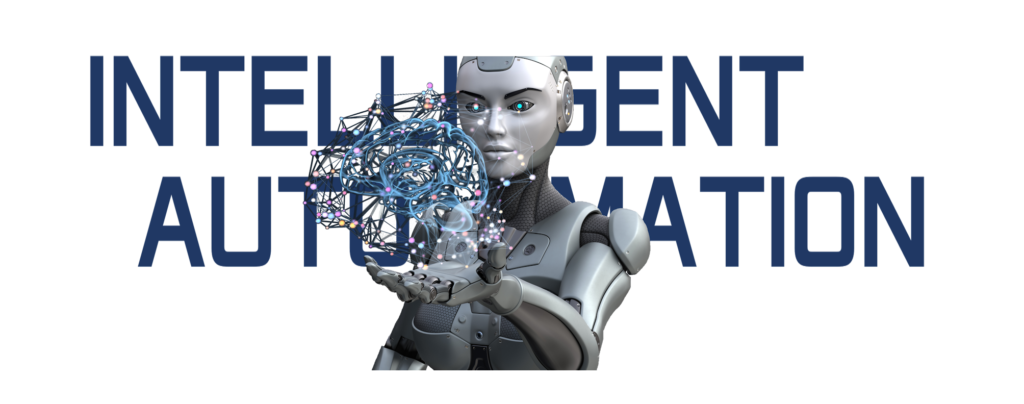More and more articles are appearing that discuss the topic of intelligent automation. The most common description of intelligent automation is the enhancement of Robotic Process Automation (RPA) using cognitive technologies (aka artificial intelligence). Vidushi Singh, Digital Marketing Consultant at Growth Scooter, calls this marriage of technologies “cognitive automation”; and, at Enterra Solutions®, we refer to it as Cognitive Process Automation™. Several years ago, Singh wrote, “Enterprises are bracing themselves for taking the RPA and cognitive automation to the next level — coupling RPA with cognitive technologies, machine learning and voice recognition. These steps will ensure that the system will not only work on pre-based rules but [will] also [be] backed with intelligence and [the] power of judgment.”[1]
More recently, tech writer Bob Violino (@BobViolino) reported the corporate push toward intelligent automation has accelerated throughout the pandemic. He writes, “Since the outset of the pandemic, organizations have been increasingly launching initiatives aimed at automating business processes, turning to technologies such as robotic process automation in efforts to reduce costs, speed up tasks, and improve accuracy of core business operations. Some leading organizations, however, are not stopping there. Seeking to push their automation agendas forward, they are embracing a move toward broader ‘intelligent automation’ (IA), a strategy that weaves capabilities such as artificial intelligence (AI) and machine learning (ML) into standard RPA to enhance its functionality.”[2]
The Era of Intelligent Automation
Violino is so certain that intelligent automation will play a significant role in many organizations he labels the coming years “the era of intelligent automation.” He also notes that other Information Age technologies are being added into the mix. “In addition to RPA, AI, and ML, intelligent automation strategies can also incorporate a mix of technologies such as natural language processing, chatbots, and others that complement each other.” Deloitte analysts report that advanced technologies are playing a significant role in overall digital transformation efforts. They note, “Greater use of a range of intelligent automation tools appears to help advance digital transformation.”[3]
The era of intelligent automation is only becoming a reality because more companies are investing in Robotic Process Automation. Deloitte analysts report, “Back in 2015, only 13% of organizations reported plans to increase automation in the coming months by investing in robotic process automation. [The] latest [Deloitte] survey shows that RPA and optical character recognition (OCR) technologies have finally hit the mainstream. Seventy-four percent of survey respondents are already implementing RPA, and 50% are implementing OCR. AI and process mining and monitoring are the next most desirable emerging technologies.” Why have RPA and intelligent automation become the next big thing? The Analytics Insight staff explains, “To succeed in today’s era of globalization, hyper-competitiveness, and ever-accelerating business cycles, many enterprises are focusing on smart technology to minimize operational complexity, surge agility and stimulate innovation while lowering the associated costs. Of all the various technologies organizations can implement to accomplish these goals, intelligent automation is one such versatile and effective technology, delivering greater value to businesses, particularly over the medium to longer term.”[4]
The advantages of RPA are numerous and they include reducing errors and freeing employees to engage in more interesting and productive tasks. Singh adds, “By leveraging the cognitive capabilities and machine learning, one can start developing intelligent systems that can be applied to high-value tasks that need human intelligence and decision-making skills. It will help organizations to automate complex tasks and make sense out of the diverse and unstructured data sets available. It will help to improve the worker performance by providing them with the right details at relevant times.” In an age of information overload and decision fatigue, letting cognitive systems make routine decisions can improve both morale and productivity. Decisions matter. As Bain analysts, Michael C. Mankins and Lori Sherer (@lorisherer), assert, “The best way to understand any company’s operations is to view them as a series of decisions.”[5] They add, “We know from extensive research that decisions matter — a lot. Companies that make better decisions, make them faster and execute them more effectively than rivals nearly always turn in better financial performance.”
To help companies make better decisions and execute them faster, Enterra® is focusing on advancing Autonomous Decision Science™ (ADS®). As I noted in another article, “ADS technology can autonomously analyze data, generate insights and make subtle, contextually informed, judgment-based decisions quickly, accurately and with limited human intervention, and then learn from the results of those decisions. It can effectively reshape the way companies structure and optimize their value chain.”[6] As noted above, the intelligent automation environment involves a number of cutting-edge technologies that can work in harmony to make the workplace more efficient and productive. There is no single, silver-bullet solution or strategy.
Tech writer Arthur Cole (@acole602) observes, “Artificial intelligence is making a big splash in enterprise applications across the board, but most of the attention has gone to public-facing functions like chatbots and personal or professional assistants. But this masks the fact that much of the real action is taking place behind the scenes, in the myriad back office processes that contribute to the costs and complexities of running a modern organization.”[7]
Concluding Thoughts
Cole notes, “Not all back office processes are the same, however, and some will take to this new paradigm more quickly than others. The task at hand, then, is to determine which functions aren’t just the easiest to automate but will contribute most directly to the bottom line.” Organizations looking to implement RPA or intelligent automation should also take the opportunity to review their processes and, when necessary, improve them before automating them. As Bill Gates (@BillGates) once noted, “The first rule of any technology used in a business is that automation applied to an efficient operation will magnify the efficiency. The second is that automation applied to an inefficient operation will magnify the inefficiency.”
Violino concludes, “Automation is a journey, not a destination.” Deloitte analysts confirm that truism. They note, “The most advanced adopters of intelligent automation have steadily moved from task-based automation toward end-to-end automation. While rebounding from the effects of the COVID-19 pandemic, over 85% of organizations are rethinking how work is done. This year, 92% of the most advanced adopters are either already implementing end-to-end automation as part of their intelligent automation strategy (44%) or are planning to implement it in the next three years (48%).” Based on those figures, Violino is probably correct when he labels the coming years “the era of intelligent automation.”
Footnotes
[1] Vidushi Singh, “The Next Big Thing In Cognitive Automation,” Proche, 18 October 2018.
[2] Bob Violino, “IT enters the era of intelligent automation,” CIO, 28 September 2022.
[3] Gina Schaefer, David Wright, Tanya Telford, and Tanya Urbaniak, “Intelligent Automation Fuels Digital Ambitions,” The Wall Street Journal, 23 August 2022.
[4] Staff, “Using Intelligent Automation Will Put You On the Success Path,” Analytics Insight, 20 August 2022.
[5] Michael C. Mankins and Lori Sherer, “Creating value through advanced analytics,” Bain Brief, 11 February 2015.
[6] Stephen DeAngelis, “Why Manufacturers Need to Rethink AI in Supply Chain,” Industry Today, 27 May 2022.
[7] Arthur Cole, “How AI is quietly revolutionizing the back office,” Venture Beat, 24 June 2022.





